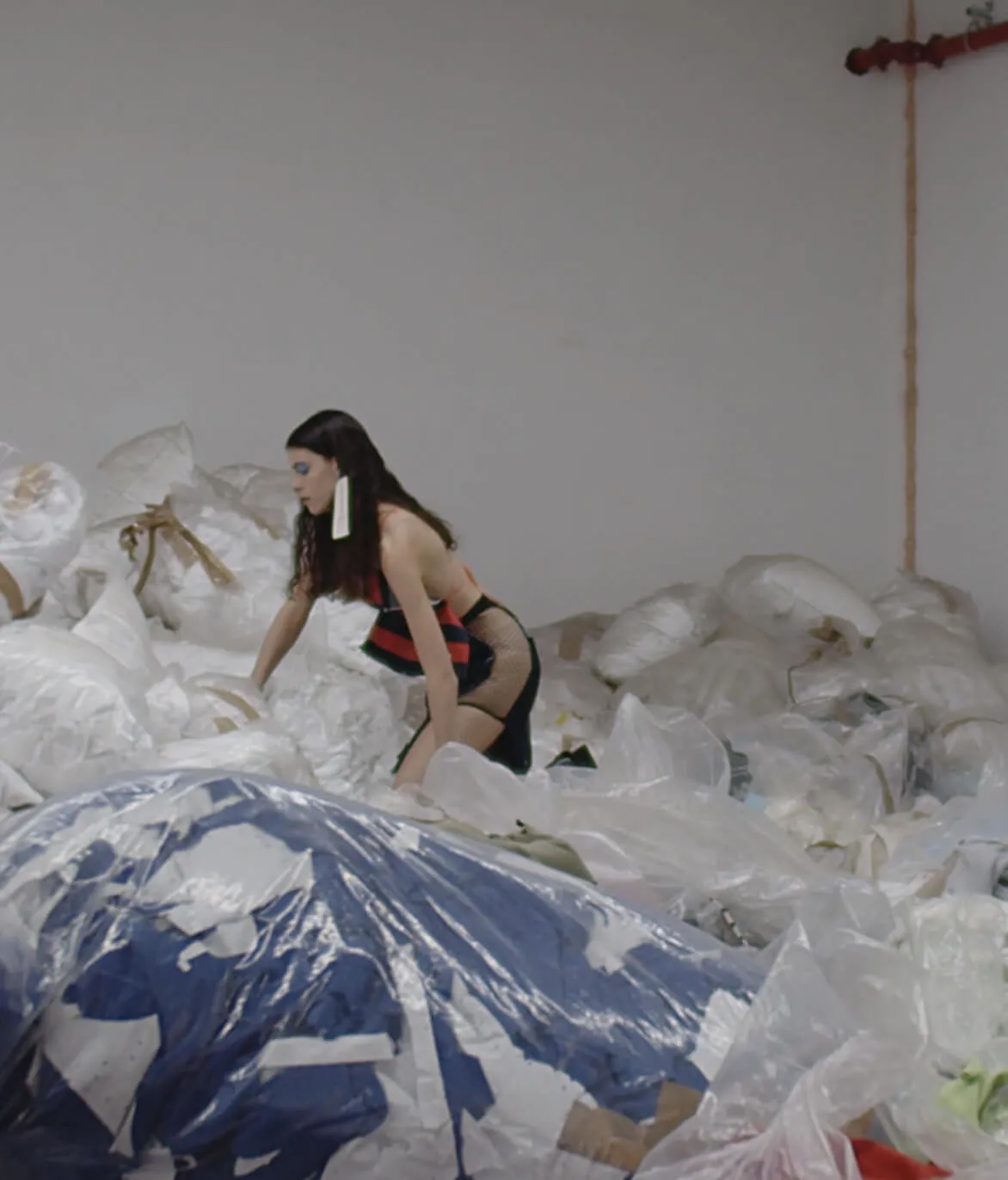

MANIFESTO
A circular fashion system
Having a long-standing commitment to quality and ethical production, it now offers brands and retailers worldwide more sustainable solutions, reducing energy and chemical use while developing new recycled fibers and finishes.


EU Fashion Regulations on Sustainability
A radical shift toward sustainable fashion in Europe.
Ecodesign for Sustainable Products Regulation and Digital Product Passport (DPP)
Ecodesign aims to drive greater sustainability of the Textile and Clothing Industry by aligning it with the EU's climate and environmental goals. Through the DPP, products placed on the European single market will have detailed information about their environmental sustainability characteristics.
Extended Producer Responsibility (EPR)
The main objective of EPR in textiles will be to create an economy of collection, sorting, reuse and preparation for reuse, and recycling, as well as incentives for producers and brands to ensure that their products are designed according to the principles of circularity.
Waste Shipment Regulation
To prevent waste streams from being misclassified as second-hand goods when exported from the EU – thus escaping the waste regulation and placing the burden on third countries – specific qualification criteria and export constraints should be ensured.
Green Claims
It is crucial, in the Textile Labelling Regulation, to ensure that products sold in the European single market bear a label that clearly identifies the composition, sustainability and circularity parameters, the size and the countries where the manufacturing processes took place.
Green Public Procurement (GPP)
Green (and social) public procurement can help reduce dependence on third countries and promote sustainability in crucial sectors by promoting the competitiveness of EU companies, rather than awarding public procurement to non-EU entities with less stringent criteria.
Waste Framework Directive (WFD)
It sets out the legal framework for waste treatment in the EU to protect the environment and human health, underlining the importance of using appropriate waste management, recovery and recycling techniques to reduce pressure on natural resources and improve their use.
Corporate Sustainability Due Diligence
This directive establishes a comprehensive framework for companies to respect human rights and environmental standards across their operations and value chains, requiring them to adopt and implement a climate transition plan that is aligned with the Paris Agreement.
Corporate Sustainability Reporting Directive
Establishes new requirements for certain companies, reviewing the format and content of mandatory reports on environmental, social and governance (ESG) issues. In this first phase, it is only applicable to large companies and SMEs that are public interest undertakings.
Industrial Emissions and Best Available Techniques (BAT)
Updating emissions legislation and adopting best available techniques will guide the industrial investments needed for the EU's transition towards a cleaner, carbon-neutral, circular and competitive economy.
Sustainable Finance (Taxonomy)
The Taxonomy Regulation sets out criteria for economic activities to be considered environmentally sustainable, thus playing an important role in protecting against greenwashing practices and creating a reference framework for investors and companies.
Microplastics
The regulation aims to tackle the presence of microplastics in the environment by restricting their intentional addition to products and combating unintentional release, using standardisation, certification and regulatory measures, as well as harmonising methods for measuring releases.
Restrictions on per- and polyfluoroalkyl substances (PFAS)
All PFAS contain carbon-fluorine bonds, which are one of the strongest chemical bonds in organic chemistry, resisting degradation in the environment, contaminating groundwater, surface water and the soils themselves. If releases persist, PFAS will continue to accumulate in the environment, drinking water and food.
Skin Sensitizers
Several products responsible for causing allergic reactions can be found in clothing, footwear and other articles that come in contact with the skin. The regulation aims to restrict all chemicals classified as skin sensitizers and some dyes applied to textile and leather goods.
Bisphenols
Due to its potentially harmful impact on health, the regulation aims to prohibit the use of Bisphenol A (BPA) and its salts in the manufacture of materials and articles intended to come into contact with food.
REACH Revision
It lays the groundwork for controlling the production, marketing and use of chemicals in the EU. REACH requires the registration and risk assessment of all chemicals manufactured or imported into the EU in quantities of one tonne or more per year.
Restrictions on persistent organic pollutants (PFHxA)
Persistent organic pollutants are substances that persist in the environment and can be present in drinking water and food. The regulation aims to control the risks of people's exposure to Perfluorohexanoic acid (PFHxA).
Textile Labelling Regulation
Within the scope of the EU Strategy for Sustainable and Circular Textiles, the introduction of a set of rules on labelling requirements in all environmentally relevant areas for textiles and related products in the textile ecosystem is being considered.
New Standards and Personal Protective Equipment (PPE)
The Deforestation-Free Products (EUDR) regulation will have a wide-ranging impact on several products incorporating rubber and wood, including PPE, thus obliging companies to ensure that products sold in the EU are not leading to deforestation.
EU-India Free Trade Agreement
The strategic partnership between the EU and India, including in trade and investment, will certainly have bilateral implications for various types of goods traded, specifically and significantly in textiles and clothing.
EU-Mercosur Free Trade Agreement
A free trade agreement between the EU and Mercosur would have the great advantage of covering a market of more than 750 million consumers, a proportion of almost 10% of the world's population, eliminating customs tariffs on the vast majority of products traded.
Pan-Euro-Mediterranean Convention on Rules of Origin (PEM Convention)
The aim of the PEM Convention is to encompass and systematise the preferential rules of origin within the framework of the various trade agreements established between the countries of the pan-Euro-Mediterranean region, with the objective of improving and simplifying the provisions established in the previous regimes.
Unfair Trade Practises
EU rules on unfair commercial practices allow national authorities to prevent situations such as providing false information to consumers or aggressive marketing techniques from occurring in order to influence the consumers choices.
Net Zero Industry Act
In order to prioritise energy efficiency to meet the EU's energy and climate targets, it is crucial to strengthen the manufacturing of carbon-neutral technologies in terms of final products, components and machines used primarily in their production.
Anti Coercion Initiative
Aware of the potential implications resulting from economic coercion by third countries on the whole of the EU or to a single member state, it is essential to ensure an effective, efficient and rapid response from the EU, allowing, as a last resort, to combat this practice through joint response measures.
Carbon Border Adjustment Mechanism (CBAM)
The CBAM regulation currently covers EU imports of a group of target sectors, selected according to specific criteria, namely: cement, iron, steel, aluminium, fertilisers, electricity and hydrogen; for carbon dioxide, nitrous oxide and perfluorocarbon emissions.
EU-Turkey Customs Union
In force since 1995, based on the 1963 Ankara Agreement and its 1970 Additional Protocol, the Customs Union with Turkey is in the process of a comprehensive review, with the aim of ensuring the incorporation of several reforms proposed by both parties involved.
Forced Labour Regulation
With the aim of completing the EU's legislative and policy framework on forced labour, the new regulation prohibits the placing on the European single market, and the export to third countries, of products made with forced labour and even requires the withdrawal of these products from the market.
Foreign Subsidies Regulation
The Foreign Subsidies Regulation aims to tackle the distortions caused by subsidies granted by third countries to companies operating in the European single market, thereby levelling the playing field with EU companies.
Circular Ecosystem
